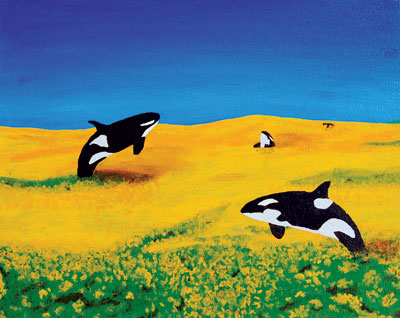All Nonfiction
- Bullying
- Books
- Academic
- Author Interviews
- Celebrity interviews
- College Articles
- College Essays
- Educator of the Year
- Heroes
- Interviews
- Memoir
- Personal Experience
- Sports
- Travel & Culture
All Opinions
- Bullying
- Current Events / Politics
- Discrimination
- Drugs / Alcohol / Smoking
- Entertainment / Celebrities
- Environment
- Love / Relationships
- Movies / Music / TV
- Pop Culture / Trends
- School / College
- Social Issues / Civics
- Spirituality / Religion
- Sports / Hobbies
All Hot Topics
- Bullying
- Community Service
- Environment
- Health
- Letters to the Editor
- Pride & Prejudice
- What Matters
- Back
Summer Guide
- Program Links
- Program Reviews
- Back
College Guide
- College Links
- College Reviews
- College Essays
- College Articles
- Back
A Money-Maker For Its Own Conservation
There is quite the negative connotation put on corporations like SeaWorld exploiting animals, which has lead people to assume their incomes are solely for selfish, corrupt reasons. Exhibiting orcas and other animals is actually vital in its positive financial effect on conservation efforts. Humans can contribute significantly to the wellness of the orca species by exhibiting them in marine parks and aquariums when a large portion of the income is used on benefitting its species.
The best financial contribution humans can do for an animal’s species is funding for its conservation. Due to the concept of captivating a few to help the many, it benefits both the species and the park. The animals attract people to the park, bringing in revenue from increased attendance, which will then go back into many things: species conservation, exhibit animal’s care, exhibit upgrades, better trainers, etc. Founded in 1994, the SeaWorld & Busch Gardens Conservation Fund was born out of SeaWorld’s aim to put something back into the species the park exhibited. In 10 years of operation, the foundation accumulated 10 million dollars in grants, and since it is an entity aside from the park, 100 percent of donations were committed to wildlife conservation efforts (Hodgins 2). This foundation could have only reached success through necessarily exploiting orcas and other sea animals, receiving money from both people’s desire for entertainment and to aid with the animals’ conservation.
Humans naturally support things morally “good”, and the success of a controversial park like SeaWorld depends on which side is more publicized. Since causing a great blow to SeaWorld’s image and income, the 2013 documentary “Blackfish” has forced the park to fund conservation efforts in hopes of regaining its former status. It is a clever move for SeaWorld. They recognized that donating their income to conservation efforts possibly changes the hearts of people who originally disliked the exploitation of animals and idea of mistreatment. After pledging 10 million dollars to fund conservation of orcas in the wild, committing 1.5 million dollars in partnership with the National Fish and Wildlife Foundation, and launching a 10 million dollar campaign defending its treatment of whales, attendance rose 5.6% of this year (Martin 7,9). “Blackfish” gave quite the negative impact on Seaworld’s reputation, and to bounce back, SeaWorld utilized its wealth to publicize the opposite, more positive end of its work and intention. The park’s recent efforts successfully showed SeaWorld’s “goodness”, in turn, attracting visitor attendance and gaining income.
Reputation is all a money’s game in accordance to the heart of the people. The controversy over SeaWorld’s existence can go on and on, but in the end, whoever uses the most money to showcase whatever they want the people to ingest will prevail. Whether that be publication of mistreatment or funding conservation efforts, the money spent ultimately reveals its success through the reaction of the people. So, should orcas and other animals continue to be exhibited in marine parks and aquariums? Yes, since that is what it takes to make more money to benefit its species.

Similar Articles
JOIN THE DISCUSSION
This article has 0 comments.
